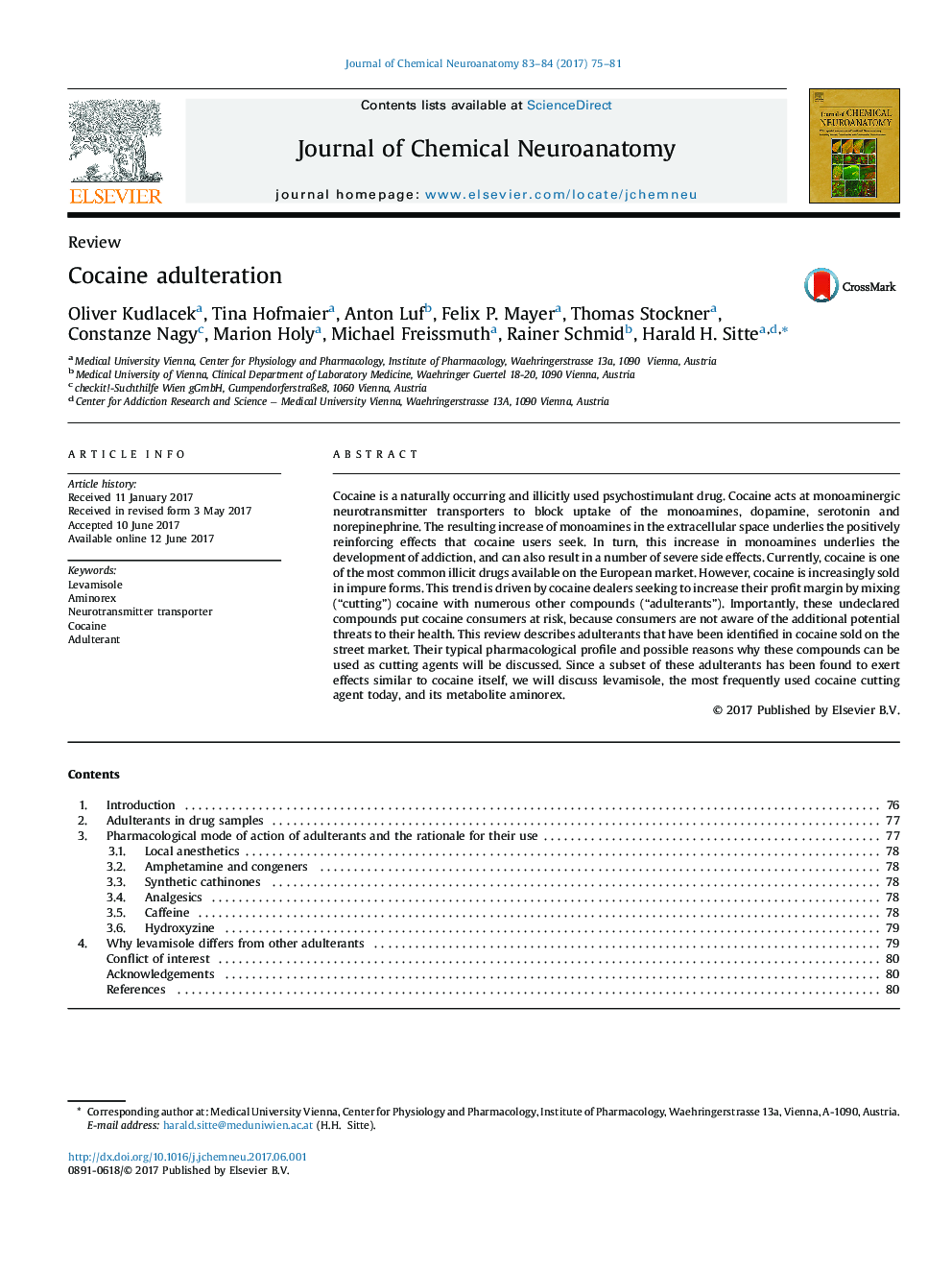| کد مقاله | کد نشریه | سال انتشار | مقاله انگلیسی | نسخه تمام متن |
|---|---|---|---|---|
| 5512691 | 1540439 | 2017 | 7 صفحه PDF | دانلود رایگان |
Cocaine is a naturally occurring and illicitly used psychostimulant drug. Cocaine acts at monoaminergic neurotransmitter transporters to block uptake of the monoamines, dopamine, serotonin and norepinephrine. The resulting increase of monoamines in the extracellular space underlies the positively reinforcing effects that cocaine users seek. In turn, this increase in monoamines underlies the development of addiction, and can also result in a number of severe side effects. Currently, cocaine is one of the most common illicit drugs available on the European market. However, cocaine is increasingly sold in impure forms. This trend is driven by cocaine dealers seeking to increase their profit margin by mixing (“cutting”) cocaine with numerous other compounds (“adulterants”). Importantly, these undeclared compounds put cocaine consumers at risk, because consumers are not aware of the additional potential threats to their health. This review describes adulterants that have been identified in cocaine sold on the street market. Their typical pharmacological profile and possible reasons why these compounds can be used as cutting agents will be discussed. Since a subset of these adulterants has been found to exert effects similar to cocaine itself, we will discuss levamisole, the most frequently used cocaine cutting agent today, and its metabolite aminorex.
Journal: Journal of Chemical Neuroanatomy - Volumes 83â84, October 2017, Pages 75-81
